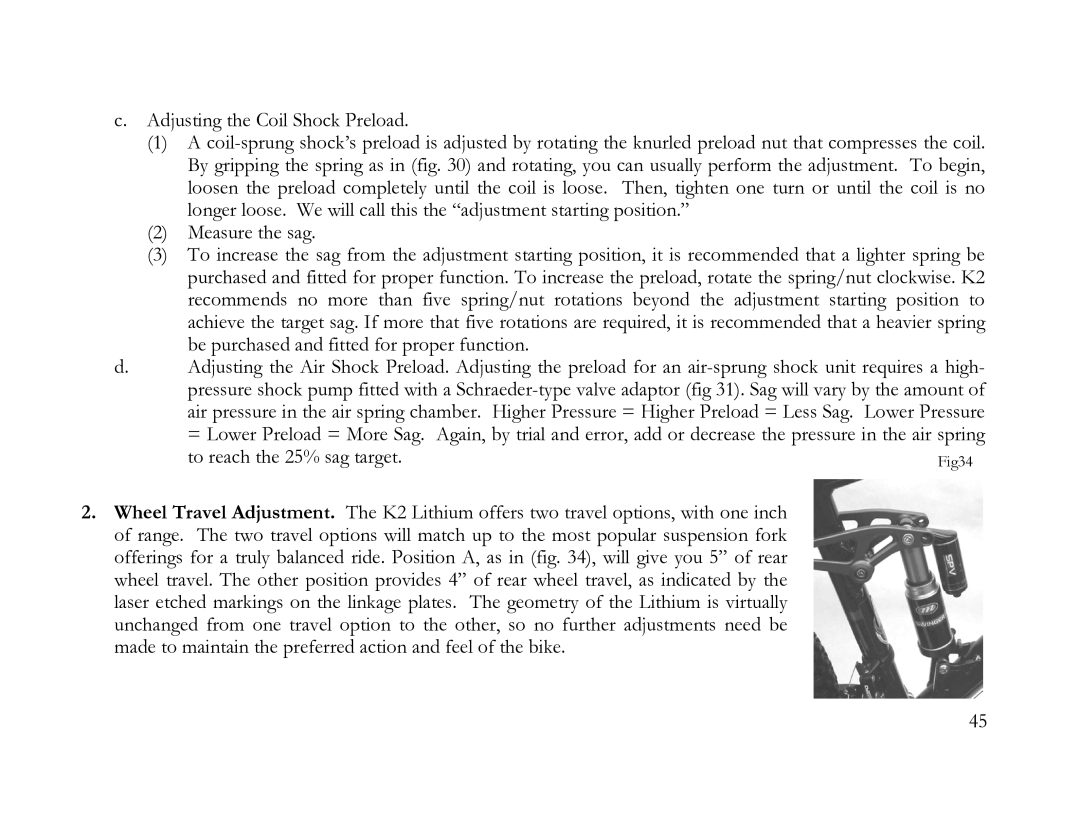
c.Adjusting the Coil Shock Preload.
(1)A
(2)Measure the sag.
(3)To increase the sag from the adjustment starting position, it is recommended that a lighter spring be purchased and fitted for proper function. To increase the preload, rotate the spring/nut clockwise. K2 recommends no more than five spring/nut rotations beyond the adjustment starting position to achieve the target sag. If more that five rotations are required, it is recommended that a heavier spring be purchased and fitted for proper function.
d.Adjusting the Air Shock Preload. Adjusting the preload for an
to reach the 25% sag target. | Fig34 |
2.Wheel Travel Adjustment. The K2 Lithium offers two travel options, with one inch of range. The two travel options will match up to the most popular suspension fork offerings for a truly balanced ride. Position A, as in (fig. 34), will give you 5” of rear wheel travel. The other position provides 4” of rear wheel travel, as indicated by the laser etched markings on the linkage plates. The geometry of the Lithium is virtually unchanged from one travel option to the other, so no further adjustments need be made to maintain the preferred action and feel of the bike.
45
